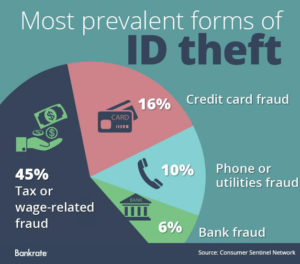In many states, the driver’s license and car registration expire on your birthday. The not so gentle reminder that you are a year older, and they want money. When you stop and really think about it, there are probably a few things that are renewed annually. My Microsoft 365 for example, some insurance types, etc. These are not necessarily discretionary items- many of us need computer programs and certain insurances to work and protect our property. So, because I am a nerd, I started to think about the annual fees we pay, and when they are due.
Lawyering bar fees and practice related fees aside (which are also annual) our family pays roughly $468.00 a year for various things. Our computer programs, including virus and malware stuff, state registration renewal on two vehicles, and yes, I have Amazon Prime (I can explain, but I don’t want to). The due dates are sprinkled throughout the year, with some due in November, March, July… you get the idea. Since we know these fees are coming every year, we should plan for them. Lots of people plan for Christmas, birthdays, holidays and may save a bit aside, but not for our expected, routine, boring annual commitments.
If we round up our annual commitments to $500.00 a year, and divide that by twelve, I have to save roughly $42.00 a month to cover these fees. If I receive 26 paychecks a year (paid bi-weekly) I have to save about $19.25 each payday to meet our commitments. This is the basic idea of a “sinking fund,” aptly named because businesses deposit money into these accounts to “sink the debt” (fun fact)**.
Placing the estimated amount of money into a “holding” type account or reserving them separately in your checking account will allow you to have the funds available when the payments are due. Here are a few things to consider when you decide to start a sinking fund, and save a little each payday for your expected annual expenses:
1. Make sure IF you open a separate CHECKING account at the bank, you have a FREE account. Service fees will eat up what you put aside and cause you to go a bit backwards. I recommend a small(ish) regional bank or credit union for these accounts.
2. Do NOT open a SAVINGS type account if you will make frequent withdrawals to pay these bills as they come due. “Regulation D” is a federal rule that limits the amount to free transfers or withdrawals to six, afterward, you can be charged a fee for each additional .
3. Have that baby emergency fund,$500-$1000.00 saved, BEFORE you start a sinking fund. Those pesky little emergencies, such as the need to buy a tire or repair a leaking faucet, can quickly eat up the money you allocated for other expenses.
4. In the beginning, you may have a bit of overlap with what’s due and what is saved, so you may have to pay a bit more and continue saving. I know if you are living paycheck to paycheck this doesn’t always allow much room, but if you don’t start soon enough before the next expense, you may have to stretch. Example: You have $85.00 due in three months. You typically put away $21.00/ month. In three months, you have $63.00 saved, but are $21.00 short. Pay the $85.00, but still try to put away the $21.00 so you are on track for the next expense due.
It’s so easy to get frustrated we forget when the annual bills come due, and of course they still come due. Consider the sinking fund as a way to put a little away each check to cover what you will need. The stress is really reduced when the amount you need for an expected expense isn’t squeezed 100% from the same paycheck.

**And for all of you bond asset types, yes, there is a sinking fund term meaning to pay a trustee an amount to retire bond debts before they come due… though most of us have no idea what that even means. I just don’t want angry email.
 source: imtresidential.com
source: imtresidential.com


 To make matters worse, in my humble opinion, the guardians of your credit report (and mysteriously calculated “score”) actually charge consumers hard earned dollars for access to their OWN information. The nerve! But my feelings aside, checking your credit report is an important part of taking control of your money. The Fair Credit Reporting Act, FCRA, authorizes one free credit report each year from each of the three credit reporting bureaus. There is only one link that is “federally certified” so do not click into any of the 34 ads on the way to
To make matters worse, in my humble opinion, the guardians of your credit report (and mysteriously calculated “score”) actually charge consumers hard earned dollars for access to their OWN information. The nerve! But my feelings aside, checking your credit report is an important part of taking control of your money. The Fair Credit Reporting Act, FCRA, authorizes one free credit report each year from each of the three credit reporting bureaus. There is only one link that is “federally certified” so do not click into any of the 34 ads on the way to  The Debt Management Service
The Debt Management Service


